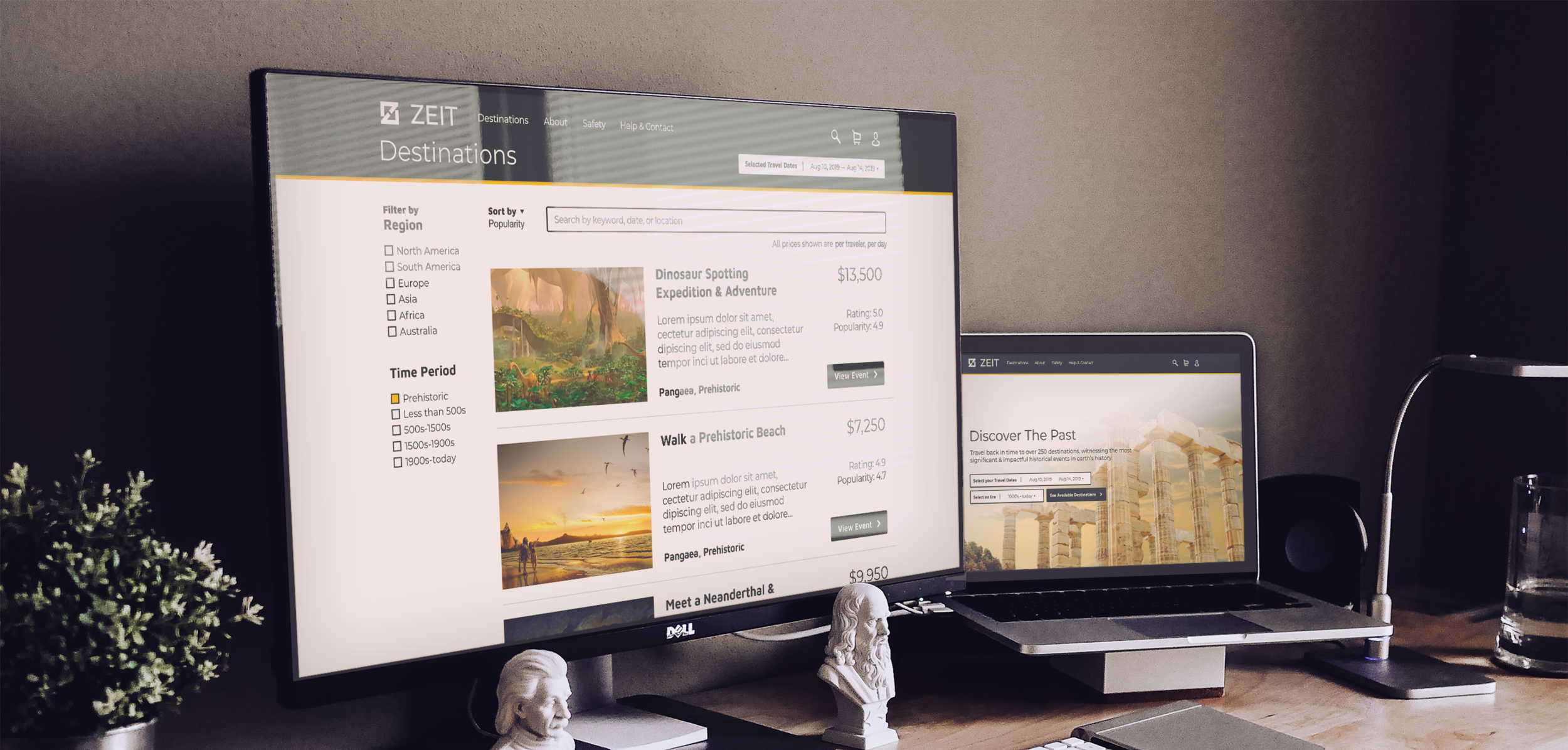Case Study:
Zeit - a (fictional) travel company,
offering time travel experiences.
Project Overview:
Zeit is in the unique position of being the only travel company in the industry to offer time travel experiences. Although the tech is over a decade old, a recent change in time travel regulations will allow Zeit to offer their services to the general public for the first time. They’ve spent time curating over 280 historic destinations and are ready for travelers to begin booking their trips, discovering the past.
Role: UX Researcher & Designer
Tools: Adobe XD, Illustrator, Photoshop
Time Spent: 120 hours (school project)
Deliverables: Modern logo, responsive website
Team: Design mentor & myself













